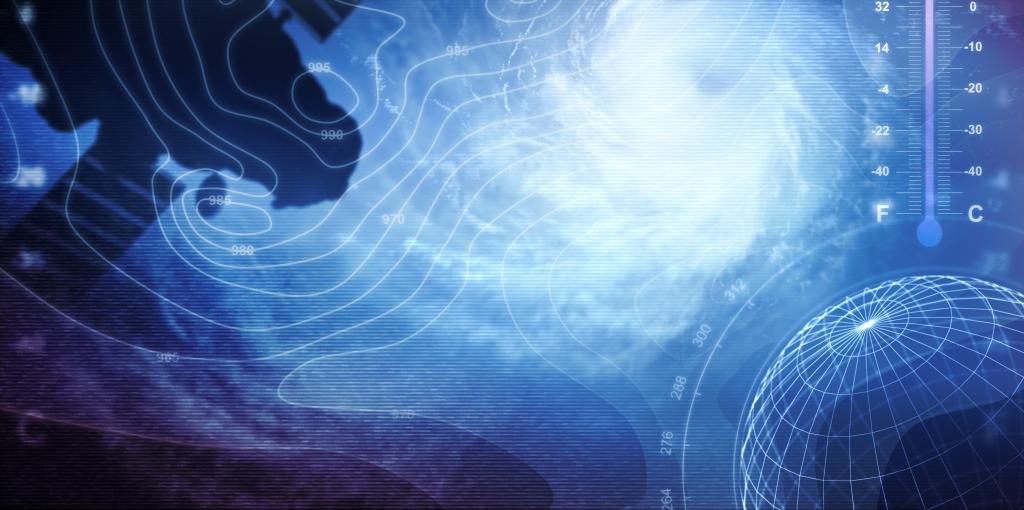Atmos BS Undergraduate Research
- Home
- Academics
- Departments & Units
- Atmospheric, Oceanic & Earth Sciences
- Majors & Minors
- More About Atmos BS
- Atmos BS Undergraduate Research
Admission CTAs
Main navigation
Section Navigation: More About Atmos BS
Undergraduate Research Advisors
CLIM 408 Senior Research consists of student research, under the direction of a faculty member, in atmospheric science, physical oceanography, climate dynamics, or a related field. Students are encouraged to go to faculty web pages (click on individual instructor names below) or the department research pages to learn more about individual research interests of faculty members.
Once a student has identified a potential advisor, the student should email the professor to schedule an appointment to discuss a possible research project.
Faculty members who have expressed interest in advising CLIM 408 projects include:
| Natalie Burls | Associate Professor Ocean Dynamics, Coupled Ocean-Atmosphere Climate Variability and Paleoclimatology |
| Paul Dirmeyer | Professor of Climate Dynamics Role of land surface in climate |
| Barry A. Klinger | Associate Professor, Graduate Coordinator Ocean circulation and climate |
| Cristiana Stan | Professor Climate predictability and dynamics |
| David Straus | Professor Atmospheric circulation and predictability |
Below are some examples of the kind of great projects AOES undergraduates have been able to work at George Mason University and beyond.
CLIM 408 Senior Research [Atmospheric Science]
Some projects Atmospheric Science majors have been working on in the recent past. Expand panels to see project topic.
Gregory Monaghan (2019)
Poleward Trend in the South Atlantic Subtropical Ocean Front: A Possible Verification of Hadley Expansion
Jeremy Goldstein (2018)
An analysis of how re-forecasts from CFSv2 improved from the real time GFS forecasts for hurricane Isabel in 2003
The purpose of this paper is to analyze how an updated re-forecast improved from original GFS forecasts for hurricane Isabel. The variables that will be discussed in this paper include total rainfall, wind shear, 200mb and 850mb winds, and 500 mb heights. These variables were picked because they are important variables that could be used to indicate a hurricane threat. The variables discussed in this paper are analyzed by using GrADS to review the 00Z forecasts for September 18th 2003 which was when the storm first made landfall. The results indicate that the re-forecasts from the CFS generally did a better job accurately forecasting the observed values for all variables. Both models did a good job picking up the location of these features but had a difficult time narrowing down the exact magnitude.
Cristina Benzo (2018)
Wind energy? I’m a big fan
Although many countries across the world have realized the importance and environmental benefits of renewable energy, many regions in the US have yet to take advantage of these resources. Several economic, social, and political factors play a role in renewable energy implementation, but little attention and research has been conducted on the environmental feasibility of such projects. The West North Central region of the United States has one of the greatest potentials for wind energy, but because of its current heavy reliance on coal and oil, there is little research on how much wind energy potential there is. This project attempts to provide a preliminary analysis on wind power viability in this region by modeling wind speed and variability from 1980 to 2017; this data was also made into an interactive web application in the effort to make this type of information more accessible, visually appealing, and interesting to the public.
Zachary H. Manthos (2018)
Antarctic sea-ice variability: Assessing trends and mechanisms
Thomas Coccoli (2017)
A Climatological Study of Tropical Cyclones in the Atlantic Basin
Using the HURDAT data set, the frequency and intensity of tropical cyclones were examined on a 100-year time scale along with points of origin, probability track distribution, and land and sea impacts. The results indicate that tropical cyclone activities in the Atlantic Basin show quite variability. The possible reasons for this variability is due to Saharan Air Layer activities, intensity and location of jet stream, events such as El Niño, La Niña, and the Atlantic Multi-Decadal Oscillation.
Joseph Anderson (2016)
A Measures-Oriented Forecast Verification for Fairfax, Virginia
The objective of this project is to compare two categories of weather forecasts: human and the operational Global Forecasting System (GFS) numerical model. The comparison will be based on the forecast verification of each category; continuous variable testing (temperature) and Dichotomous variable testing (precipitation). The following will explore the significance/ noteworthiness of forecasting and then an in-depth review of pertinent forecast verification techniques. Relevant techniques include; methods of verification of real continuous scalar quantities, and methods of verification of binary (dichotomous) events.
Atmospheric Science Internships
Here are some Atmospheric Science students who recently took internships at George Mason University or at national laboratories in the DC metro area. Click on panels to see details.
NASA Langley Research Center
Amber Verstynen
NOAA National Center for Weather and Climate Prediction
Jeremy Goldstein ('18)
Marissa Corrado ('18)
Dylan Costlow ('17)
AOES, Subseasonal Forecasts
- Jacquelyn Crowel and Riley Freeland work as subseasonal forecasters, producing the weekly forecast maps in support of Dr. Kathy Pegion’s NOAA funded project SubX (link).
- Crowel is also investigating the prediction of tropical cyclones in SubX data and Freeland is looking at winter storms, both for the SubX-IFLOOD coastal flood forecast system (link) in collaboration with Dr. Natalie Burls (AOES), Dr. Kathy Pegion (AOES) and Dr. Celso Ferriera (Volgeneau School of Engineering) through a grant from the College of Science and Volgeneau School of Engineering.
